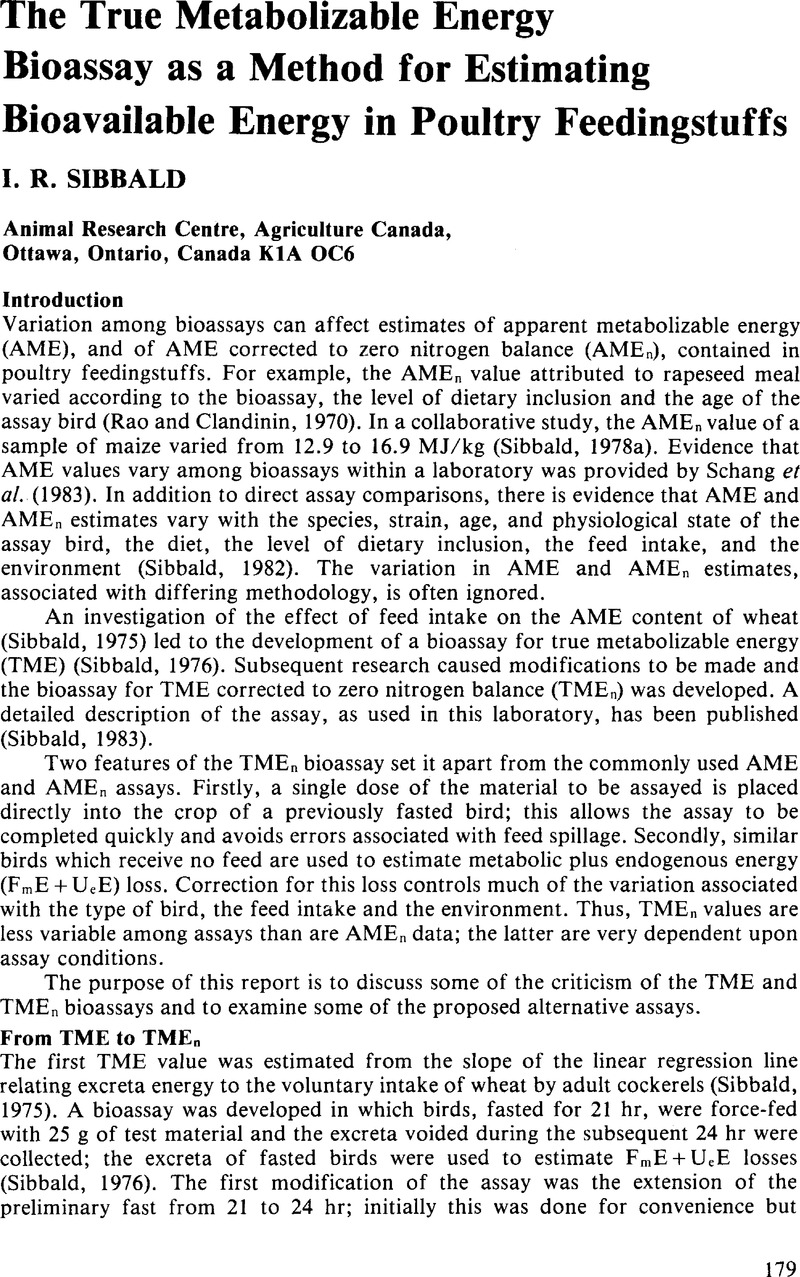Crossref Citations
This article has been cited by the following publications. This list is generated based on data provided by Crossref.
Shaw, J.
Baidoo, S.K.
and
Aherne, F.X.
1990.
Ileal and faecal energy digestibility coefficients of full-fat canola seed for swine.
Animal Feed Science and Technology,
Vol. 28,
Issue. 1-2,
p.
71.
Farrell, D. J.
Thomson, E.
Du Preez, J. J.
and
Hayes, J. P.
1991.
The estimation of endogenous excreta and the measurement of metabolisable energy in poultry feedstuffs using four feeding systems, four assay methods and four diets.
British Poultry Science,
Vol. 32,
Issue. 3,
p.
483.
Johnson, Raymond J.
1992.
Principles, problems and application of amino acid digestibility in poultry.
World's Poultry Science Journal,
Vol. 48,
Issue. 3,
p.
232.
Scott, T.A.
Silversides, F.G.
Classen, H.L.
Swift, M.L.
and
Bedford, M.R.
1998.
Comparison of sample source (excreta or ileal digesta) and age of broiler chick on measurement of apparent digestible energy of wheat and barley.
Poultry Science,
Vol. 77,
Issue. 3,
p.
456.
Liu, Q.
Zhou, D.Y.
Chen, L.
Dong, R.Q.
and
Zhuang, S.
2015.
Effects of feruloyl esterase, non-starch polysaccharide degrading enzymes, phytase, and their combinations on in vitro degradation of rice bran and nutrient digestibility of rice bran based diets in adult cockerels.
Livestock Science,
Vol. 178,
Issue. ,
p.
255.
Mateos, G.G.
Cámara, L.
Fondevila, G.
and
Lázaro, R.P.
2019.
Critical Review of the Procedures Used for Estimation of the Energy Content of Diets and Ingredients in Poultry.
Journal of Applied Poultry Research,
Vol. 28,
Issue. 3,
p.
506.
VerBeek, Zoie K.
DeLeon, Claudia
Kerr, Brian J.
Shurson, Gerald C.
Noll, Sally L.
and
Koltes, Dawn A.
2024.
Amino acid and energy digestibility of conventional corn dried distillers grains with solubles, high protein distillers dried grains, and corn fermented protein, and impacts on turkey poult growth performance and intestinal characteristics.
Poultry Science,
Vol. 103,
Issue. 10,
p.
104082.



